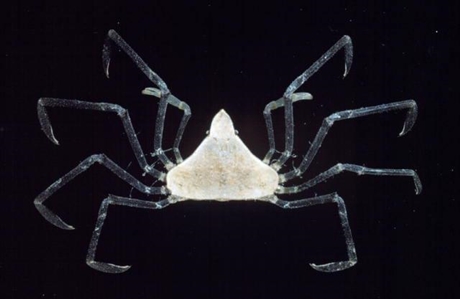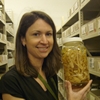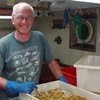General Description
Carapace as long as wide, walls strongly converging ventrally; rostrum deflexed, with shallow rostral keel. Claws (chelipeds) with weakly spatulate fingers. Walking legs with 7th article (dactyli) widest at midpoint. Up to 1.5 cm wide.
Biology
Nothing is known of the biology of the Triangle Crab but it probably uses its fine claws to pick up tiny fragments of food among the algae where it hides. As with any small benthic invertebrate of soft sediments, hymenosomatids feature in the diet of demersal fishes. This western Pacific genus is represented in Australia by two species, one tropical and one temperate.
Habitat
Estuarine and low intertidal, to depths of 13 m.
Reefs
Coastal shores
Distribution guide
Southern temperate oceans, including southern Australia.
Species Group
Depth
Shore (0-1 m)
Shallow (1-30 m)
Water Column
Max Size
15 mm
Diet
Organic matter
Harmful
Not harmful but a nip from large claws could be painful.
Commercial Species
No
Global Dispersal
Native to Australia
Species Code
MoV 1678
Conservation Status
- DSE Advisory List : Not listed
- EPBC Act 1999 : Not listed
- IUCN Red List : Not listed







